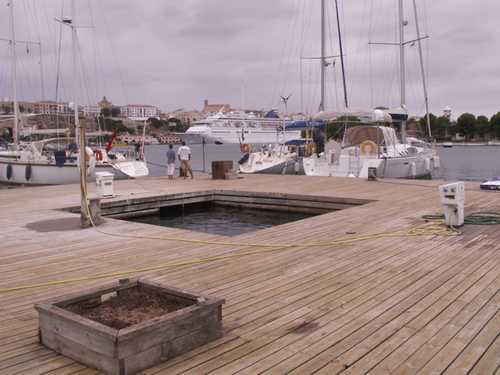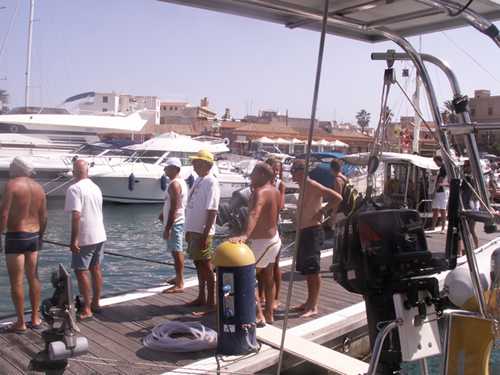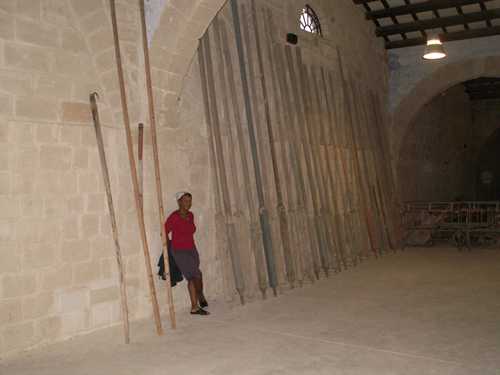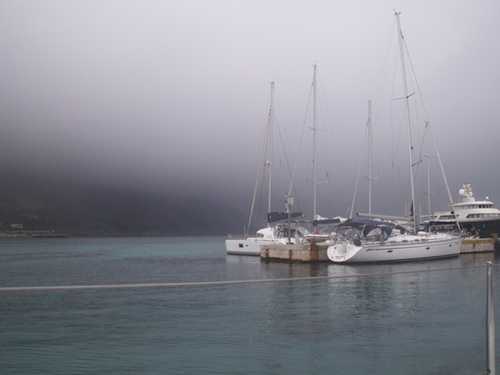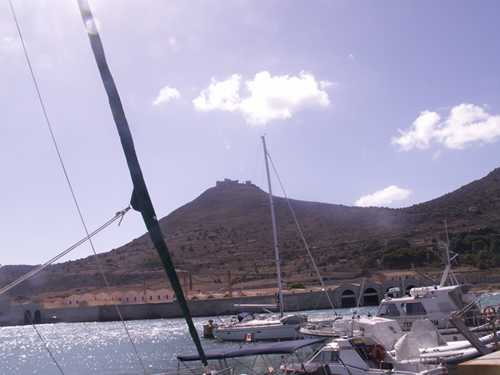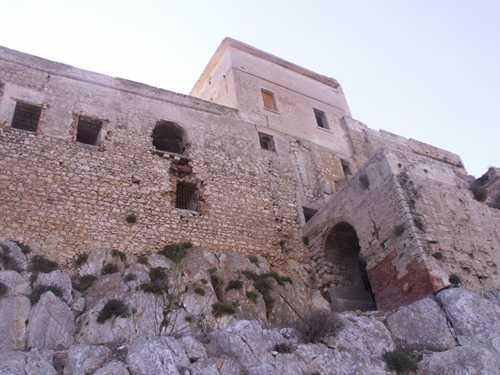Longest Double Handed Passage Yet

|
37: 55.88N 12:19.56E September is a transitional month in the We stayed in
Still we had a great view of the cruise ships as they
berthed just up river from us.
There was some more interesting traffic on the river as
well
But eventually we got a weather window and on September
1st set off to attempt to get past Sardinia and on to The wind was from the south east so against the favoured
shorter southern route. We headed towards the north end of But there were some good moments. Just after midday on
the 2nd September she who’s in charge of everything chalked up her
10,000 miles on this voyage.
And later that day we left Spanish waters after over a
month and hoisted the Italian flag
The wind had a chuckle and went north east blocking the
route between Sardinia and Another milestone – just after dawn on 5th
September the Purser became the second highest mileage person by passing
Biggle’s total of 10,276.
And then another record for the double-handers – 5 days
after leaving Menorca we tied up on the The marina was tiny and ridiculously shallow – skipper
tentatively went in and rapidly backed out again when he got down to 40 cms
under the keel and still hadn’t reached the berth. Eventually the marineros
helped us to berth on the outside of the pontoons as they knew the deeper
spots. Pat jumped in the water to investigate and nearly turned
as white as the skipper. “There’s only about 60 cms under the keel” she
spluttered. “No problem” said the skipper. “The gale is coming from the south
east so we won’t bounce around much as there’s no room for the sea to build
up” The threatened gales brought the yachts in thick and fast
and the marineros were packing them in. They managed to get a Dufour 52 into the
slot skipper rejected. The gales came and went. And then the Dufour tried to
leave. Problem was it’s keel was now caught round the chains holding the
pontoons in place.
It went back and forth to no avail. A large crowd of arm
waving Italians soon appeared. Each of them knew what he would do and all of
them had different opinions which they were sharing with anybody who wanted to
listen.
We had the best view on the dock as these photos were
taken from our cockpit. Eventually a marinero got in the water and directed
operations. With several ropes attached to the chains and with the yacht heeled
right over and maximum revs back and forth it eventually came free to much
cheering. 2 hours had passed but the pontoons remained
intact! The marineros were great fun and we spent some amusing
hours teaching each other some English and Italian. When we asked to stay
another night one said “is it because the wind is too strong?” only he
mis-pronounced wind and rhymed it with kind. We thought he meant the wine was
too strong! Pat announced she hadn’t drunk any and Paul said he had stuck to
beer! The marinero looked very confused at this point. It was 24 hours later
before the next language lesson cleared up the confusion!
Favignana used to be the centre of the tuna fishing
industry but that has now been replaced by tourism. The old massive tuna net
anchors lie piled up on the shore as a reminder of the
past.
The whole island depended on tuna for its living. Those
who weren’t involved with catching the fish either chopped up the fish, made the
cans or packed the fish in the cans. The women mostly packed the fish into cans.
To catch the migrating tunny they put out these massive
tuna nets between the islands using the above anchors to keep them in place. The
nets would steer the fish into the end killing zone where hundreds of men in
huge rowing boats would haul the tunny out of the net into the rowing boats.
Here’s one boat.
Here’s the oars and the gaffs they used to drag the fish
into the boat - massive
And those were the smaller rowing boats – the next one
was 75 foot long
The museum is impressive. Here’s a photo of what life in
the killing zone was like.
Favignana had its best year in 1859 when they managed to
catch over 10,000 tunny. But declining stocks meant dwindling returns and now
the island makes its money through tourism. The town is delightful and reminded us of
While we waited for the wind to turn in our favour we had
another grandstand view of 2 days of swimming races off the town beach. There
were hundreds of competitors and the crowds were nearly as raucous as those in
the Caribbean at the
There are lots of lizards on the island – nothing unusual
there. But we were amazed when we saw a couple stand up on their back legs and
run away upright like raptors. Never seen that
before. As the gales subsided the rain, thunder and lightning
took over and visibility dropped to near zero. We decided to stay put another
day.
As soon as the electrical storm passed the the wind
changed direction and pounded us from the North East. Our shallow berth became
dangerous and with help from the marineros we moved inside the harbour to a
deeper berth before the increasing swell had a chance to bounce us on the bottom
of the harbour which could damage the yacht.
We were forced to stay longer so skipper decided to look
at the prison.
One sweaty hour later it was a lot
closer.
As ever though some great views from the
top.
In all we had to wait 6 days for favourable weather.
Since we entered the Mediterranean
at Gibraltar we’ve had to wait 3 days at Cabo de Gata, 3 days at
Mazarron, 5 days in |
